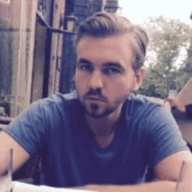As of late, it has been hard for us to write about anything other than COVID-19. The pandemic is unprecedented, and for any healthcare-related organization the virus has had an impact. TREND is no exception. But we specialize in rare and underserved diseases, and even though the world is united in its quest for a COVID vaccine, we can’t forget the daily battle so many rare disease patients are facing along with the lack of attention their illnesses receive. This is especially true for ultra-rare diseases, a loosely defined term for illnesses that sometimes affect less than 10 people around the world.
The European Union defines ultra-rare diseases as “debilitating and often life-threatening diseases affecting no more than one person in 50,000 in the Union.” Other definitions of the term vary, but patients face similar battles.
A common theme that repeats itself in the rare disease community is the fact that patients have to become experts because there is an immense lack of knowledge amongst doctors. If only a handful of people around the world suffer from an illness it is no surprise that most doctors have no knowledge of it. If there are experts, they can be difficult to find and receive care from.
There is a lack of treatment. Because the cost of bringing drugs to market is so immense, pharmaceutical companies might not be motivated to develop treatments that are only needed by a few people around the world. Different regulatory agencies like the FDA have incentivized companies to create niche drugs. The Orphan-Drug Act and the 21st Century Cures Act are steps in the right direction. Regulations and incentives need to cross borders to be as universal as possible because just covering one country will not help everyone with the condition. Rising tides need to lift all boats and accessibility has to be a cornerstone of any development. Cost and geography should never prevent someone from receiving the care they need, especially when options are so few and far between.
For ultra-rare diseases, communities can be hard to build. Chances are, patients won’t live close to one another, and they have to rely on social networking to enhance support. TREND wants to be able to assist these communities to expand their reach, facilitate treatment development, and build support. TREND hopes that our data analysis can help patients make critical discoveries.

